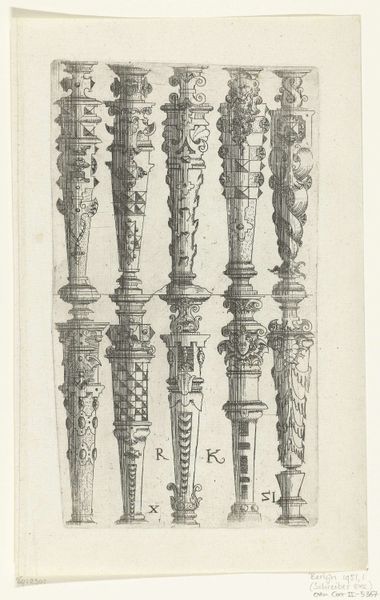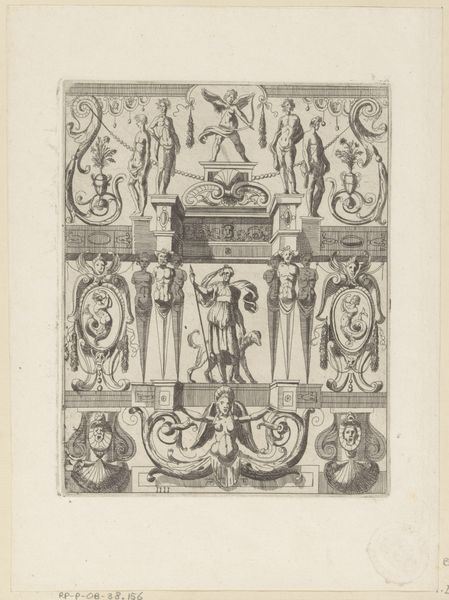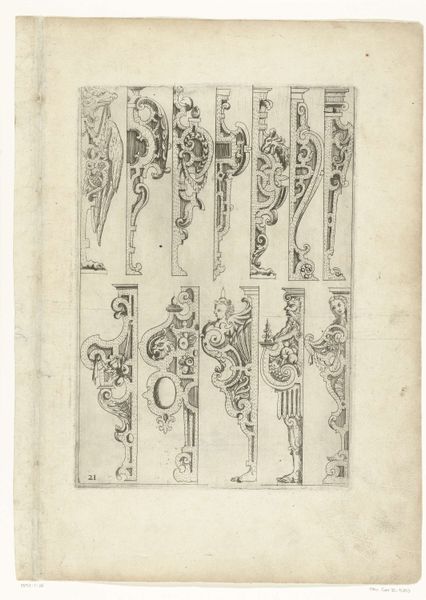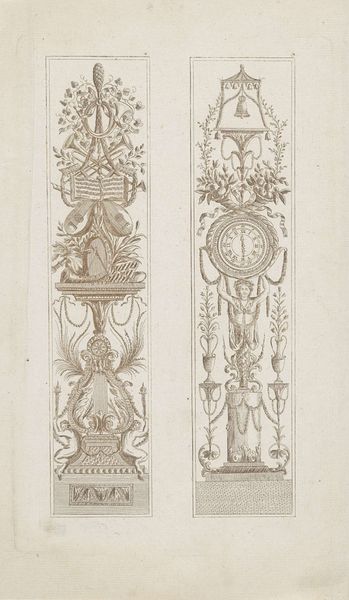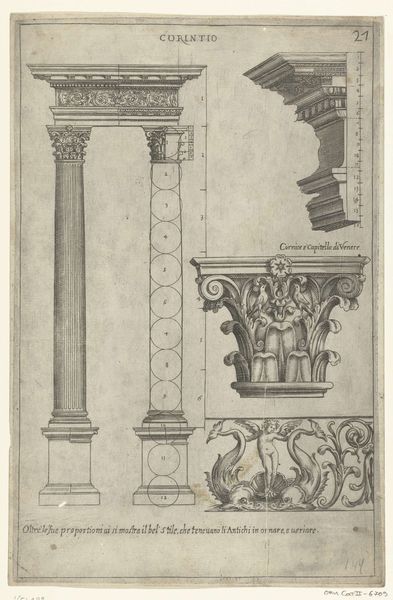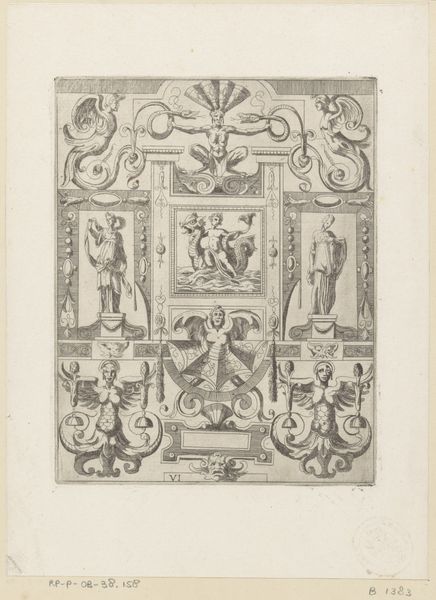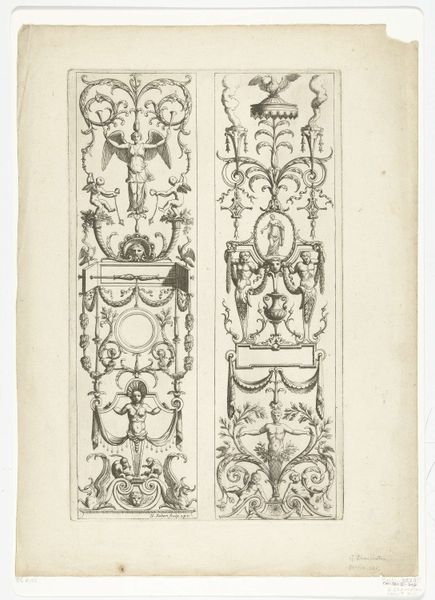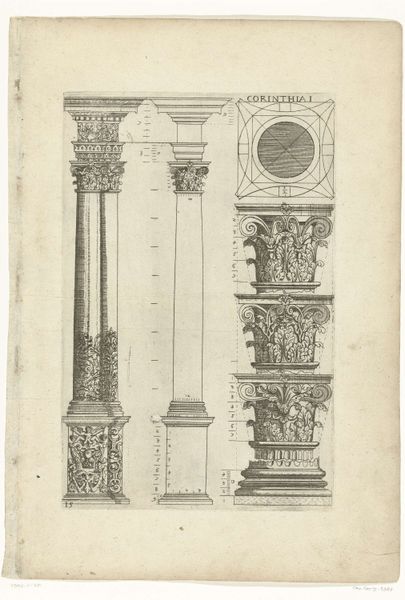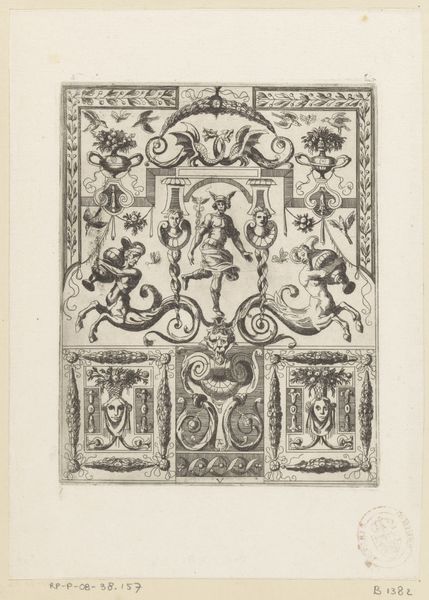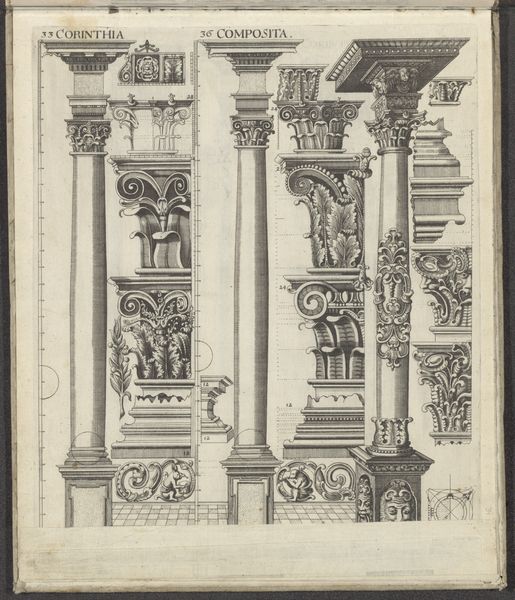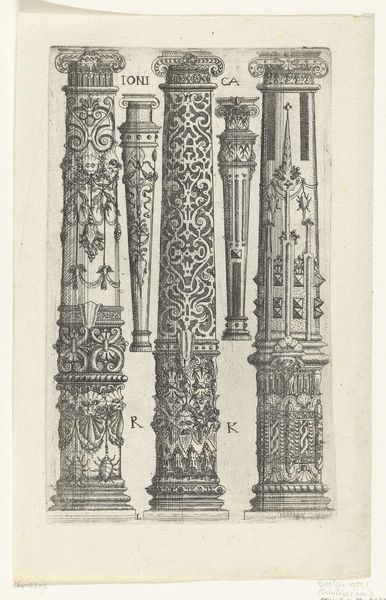
drawing, paper, pencil, engraving, architecture
#
drawing
#
baroque
#
paper
#
11_renaissance
#
geometric
#
pencil
#
engraving
#
architecture
Dimensions: height 282 mm, width 194 mm
Copyright: Rijks Museum: Open Domain
Gabriel Kramer created this undated drawing with pen and grey ink, showcasing balusters and terms from the front and side. During the late 16th and early 17th centuries, the Dutch Republic was establishing itself as a major maritime and commercial power. The architectural style of the time often reflected this burgeoning wealth and status, drawing from classical motifs to project power and sophistication. Kramer’s drawing offers a glimpse into the design elements that were becoming fashionable among the elite. The detailed renderings of balusters and terms—architectural supports often adorned with human or animal figures—reflect the humanist interest in classical antiquity, which was central to the artistic and intellectual life of the period. Consider how these architectural elements, initially reserved for religious and state structures, began to permeate private residences, subtly reinforcing social hierarchies. Kramer's drawings weren't just about aesthetics; they were about embodying social and political ideals. The integration of classical forms into everyday spaces served as a constant reminder of the values and aspirations of the ruling class.
Comments
No comments
Be the first to comment and join the conversation on the ultimate creative platform.


